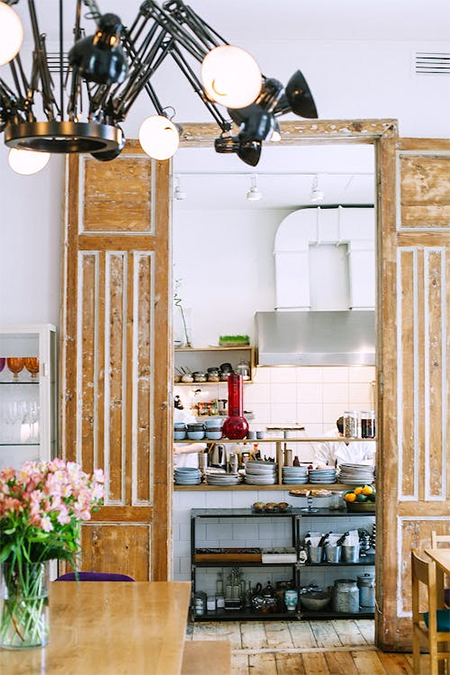When rustic interior design is referred to, it is used as an umbrella term with other similar design styles categorized along with it. To keep it simple, rustic is a word that is used to depict something that looks rough, casual, natural, and aged. Seeing this vague description, it is easy to see why other types of designs can be mistaken to be rustic, some examples are cottage, coastal, and Tuscan designs. One of the main characteristics of rustic design is that it places emphasis on using natural materials like stone or wood, whether that be for furniture or as a component to build a house.
Colors and Finishes
A good place to start when following rustic design is to follow a color palette that consists of warmer or earthier shades such as reds, browns, beiges, whites, and wood grains. Choosing accent colors to call for softer or more subdued colors like yellows, tans, reds, blues, greens, and grays. When looking for fixtures, look out for fixtures that have copper, brass, iron, or pewter finishes to go along with the warmer colors of the style. Moreover, the silhouettes and shapes being used should have imperfect lines and have an almost rugged look to make the aged characteristic of rustic interior design feel more believable.
Using Wood
Wood is one of the central materials used in rustic design however, there are cases where wood is used in excess, to the point where the flooring, walls, ceiling, and furniture are all made out of wood. Adding too much wood can drown out all the furniture and decorations around the house. Instead, strike a balance between wood and other materials. Some excellent materials that can be used with wood are metal and glass. Keep in mind that wood comes in all shapes, sizes, and colors so mixing and matching different types of wood can help bring more color and depth into a room.
Creating Interest
In any house, looking for interesting elements is important. But there are a few tips that help enhance rustic design. First, when picking furniture and fabrics, choose sizes that are more oversized, the softer-looking textures help contrast the hard texture of woods and metals to break the monotony. The second is to incorporate natural elements like plants or herbs that can bring a splash of color into a room. Lastly, avoid finishes that are glossy and instead use metals that have finishes that look weathered or are matte because using glossy finishes tends to draw too much attention and take away from the warm feeling of rustic design.
Rustic interior design maximizes natural elements that are available and creates a warm feeling that other styles try so hard to recreate. By using natural materials, colors, and creating a contrast to break repetitiveness rustic design has become one of the most famous styles of interior design and gaining international recognition as a type of interior design that will not lose significance in the next decades. The influence of this design is seen everywhere as countless other styles have also taken inspiration from the beautiful use of aged, rough, casual, and natural materials.
Photo Attribution:
1st and featured image by https://www.pexels.com/photo/interior-of-spacious-rustic-patio-with-arched-doors-4940808/
2nd image by https://www.pexels.com/photo/interior-of-cozy-kitchen-at-home-4906499/
Decorilla. (2022, August 7). Rustic Interior Design: How to Get a No-Fuss Natural Look. https://www.decorilla.com/online-decorating/rustic-interior-design/
Drake, R. (2019, August 15). Home Interior Design Styles: What is Rustic Design? https://vevano.com/blogs/design-101/home-interior-styles-rustic-design
Livermore, S. (2018, October 27). Everything You Need To Know About Rustic Design. https://www.housebeautiful.com/design-inspiration/a23937828/rustic-design-style/
Space Factor. (2022, May 15) THE DO’S AND DON’TS OF RUSTIC INTERIOR DESIGN. https://www.spacefactor.com.sg/the-dos-and-donts-of-rustic-interior-design/

